Nostalgia za człowiekiem – Festiwal Wydział Sztuki w Mieście – Move UP!
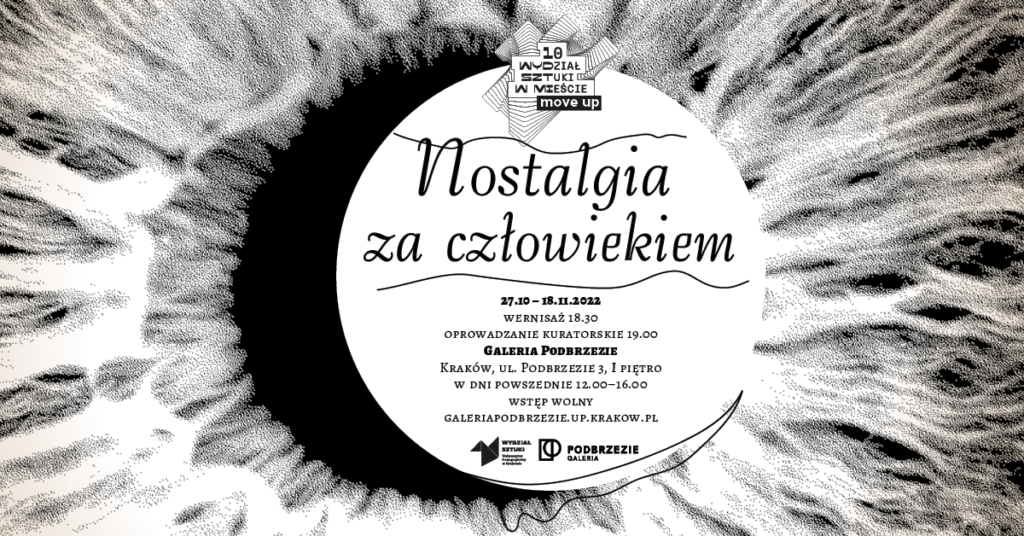
NOSTALGIA ZA CZŁOWIEKIEM 27.10 – 18.11. 2022
GALERIA PODBRZEZIE – Kraków, ul. Podbrzezie 3, I piętro
w dni powszednie 12.00-16.00 (wstęp wolny)
Wernisaż z oprowadzaniem kuratorskim: 27 października godz. 18.30
ARTYŚCI: Kaitlin Bryson & Saša Spačal, Burton & Nitta, Dunne & Raby, Natalia Kopytko, Magdalena Lazar & Marcin Pazera, Daniel Lee, Cecylia Malik i Matki Polki na Wyrębie, Krzysztof Marchlak, Łukasz Murzyn, Andrzej Najder, Bartosz Zaskórski, Jacek Złoczowski
KURATORZY: Rafał Kosewski, Monika Weychert
ARCHITEKTURA WYSTAWY, OPRAWA GRAFICZNA: Anna Zabdyrska
PRODUKCJA: Krzysztof Marchlak
Svetlana Boym pisze: Dwudzieste stulecie rozpoczęło się utopią, a zakończyło nostalgią. Optymistyczna wiara w przyszłość wyszła z mody, podczas gdy nostalgia, w lepszych i gorszych czasach, nie straciła powabu, pozostając niepokojąco współczesna. Ta wybitna teoretyczka kultury wskazuje przy tym dwa rodzaje nostalgii: odtwarzającą i refleksyjną. Pierwsza z nich to rodzaj bólu po stracie, świadomość nieodwracalności wprawionych w ruch procesów, kompulsywne wspominanie przeszłości, ujmowanej jako raj utracony. Natomiast druga dąży do odbudowania, kładzie nacisk na nostos – powrót z dalekiej podróży, w trakcie której przewartościowujemy nasze miejsce w świecie. Oba rodzaje nostalgii mają swoje odzwierciedlenie w zaprezentowanych na wystawie pracach. Ich twórcy proponują nam wgląd w różnorodne wizje kryzysu klimatycznego, zawieszone pomiędzy teraźniejszością a przyszłością. Z jednej strony oglądamy pejzaże naznaczone degradacją środowiska i postindustrialnym splinem, z drugiej – doświadczamy rzeczywistości hybrydowej, w której to, co organiczne miesza się z tym, co mechaniczne i cyfrowe. Antycypując dalsze, „postkryzysowe” losy gatunku ludzkiego możemy wyobrazić sobie jego wsteczną ewolucję (powrót do oceanów), ścisłe połączenie ze światem przyrody za pomocą nowych technologii (tworzenie tzw. infrastraktur życia) lub wymarcie i pozostawienie swojego dziedzictwa na łasce sztucznej inteligencji.
Wystawa Nostalgia za człowiekiem to zatem rodzaj refleksji przedtraumatycznej. Przeczucie grożącej nam katastrofy ekologicznej, którą sami wywołaliśmy, tworzy podatny grunt pod różnorodne spekulacje na temat dalszych losów naszego gatunku. Kasandryczne scenariusze jeszcze się nie dokonały. Aby przetrwać, być może warto aktywnie zatęsknić za utraconą częścią człowieczeństwa – za ideami wspólnotowości i opiekuńczości, które przewartościowują nasze dotychczasowe miejsce i znaczenie w globalnym ekosystemie.
Wystawa jest częścią 10 jubileuszowej edycji Festiwalu Wydział Sztuki w Mieście – Move UP!
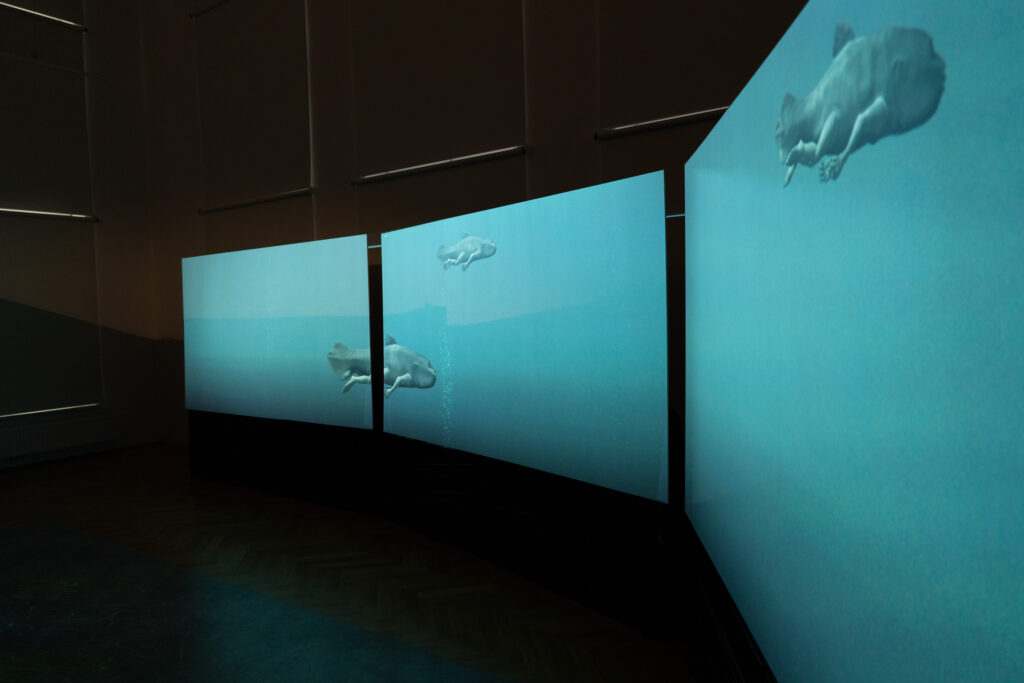
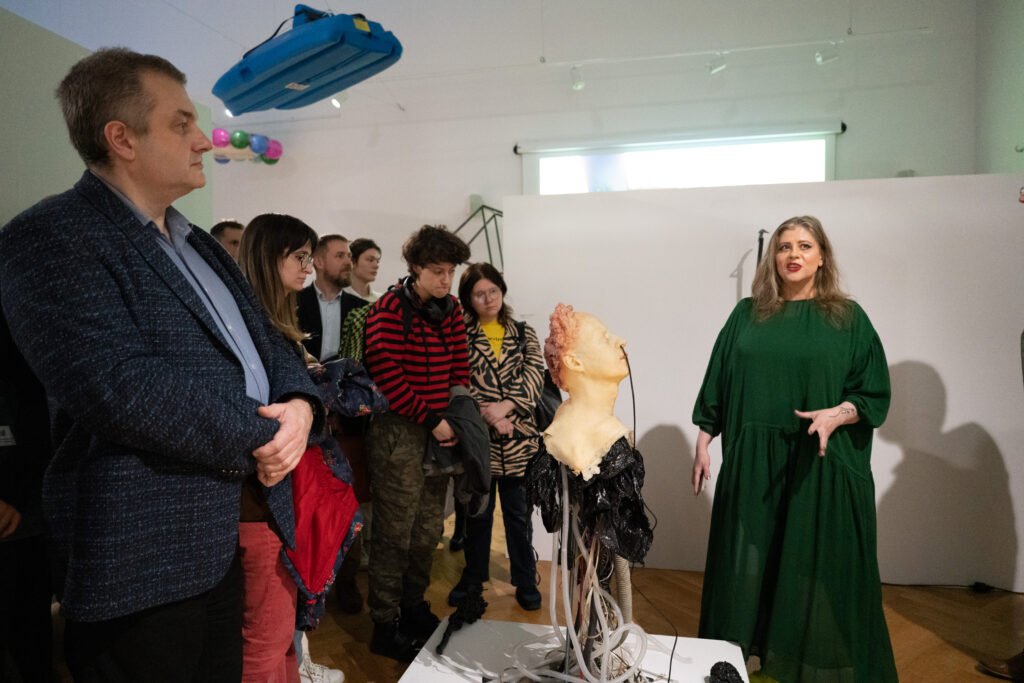


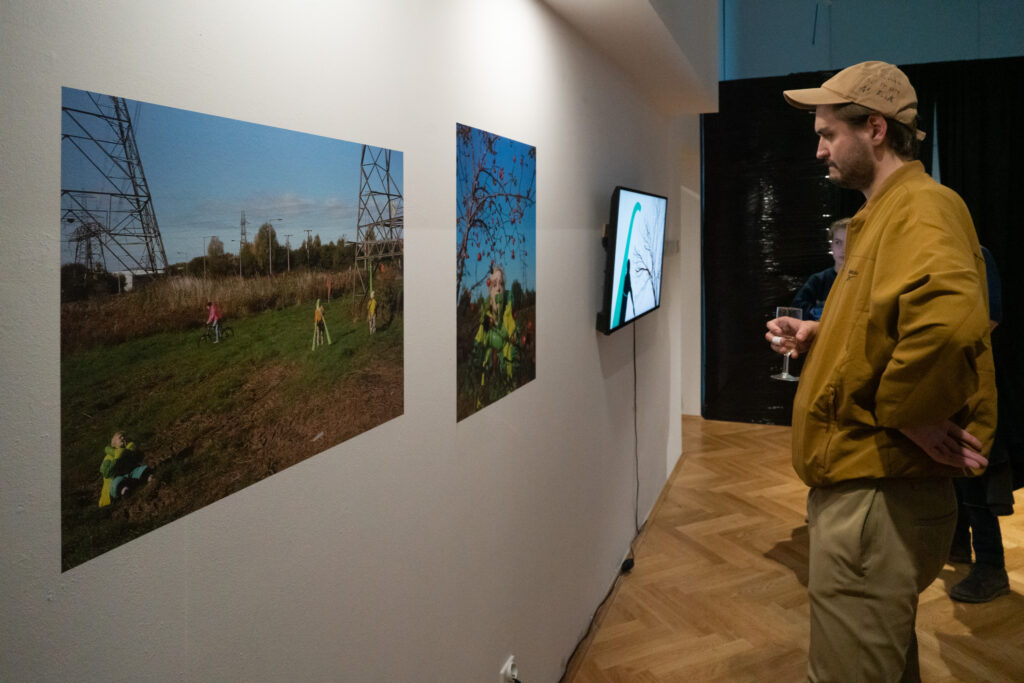

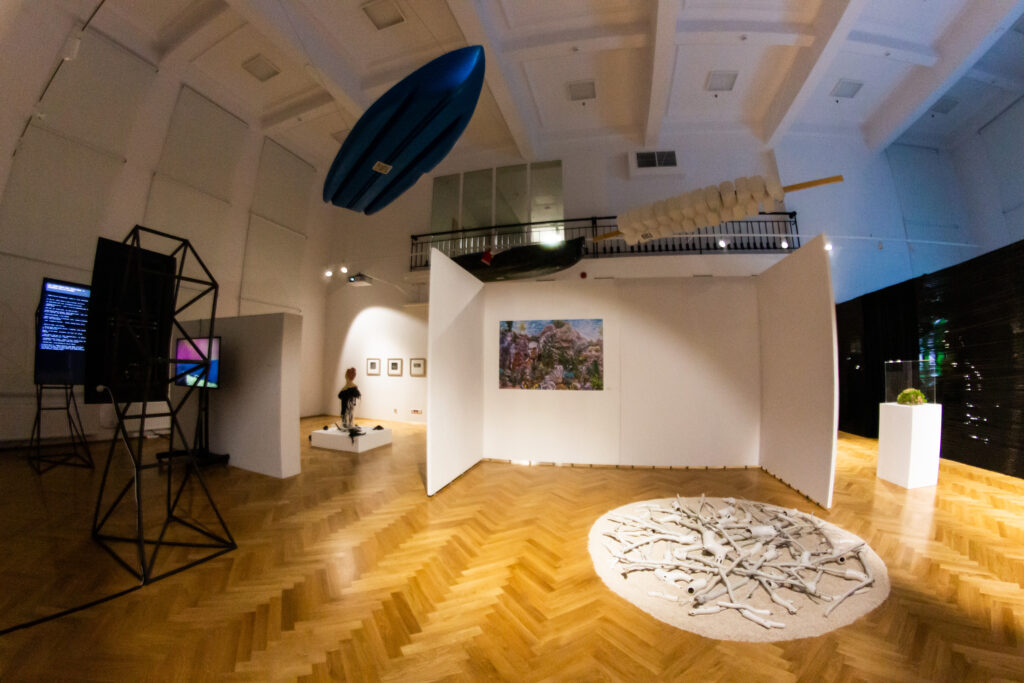
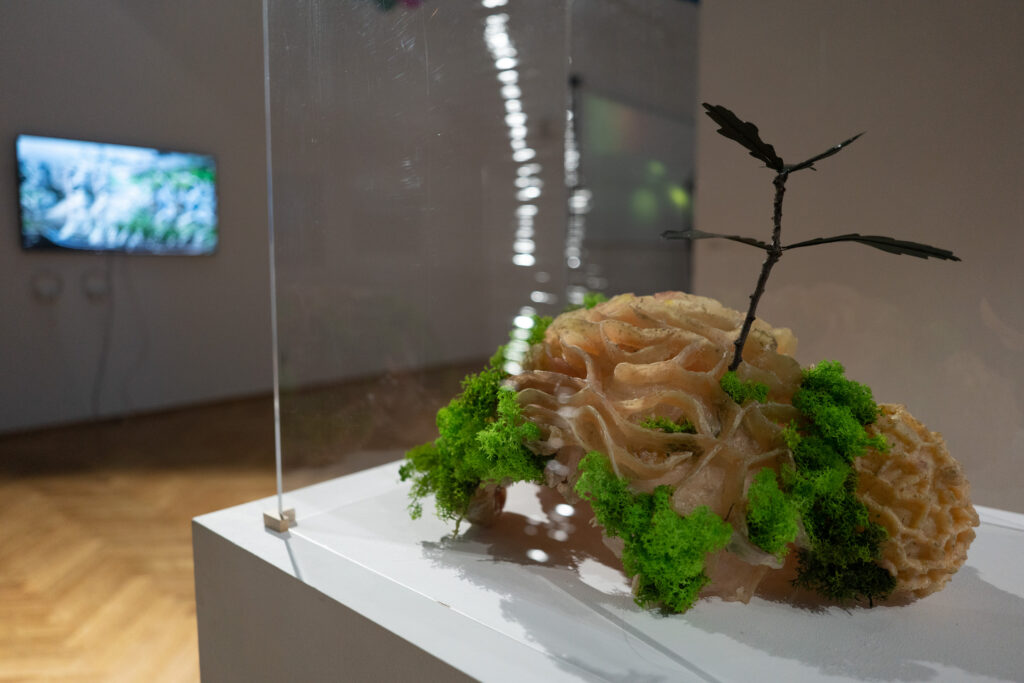
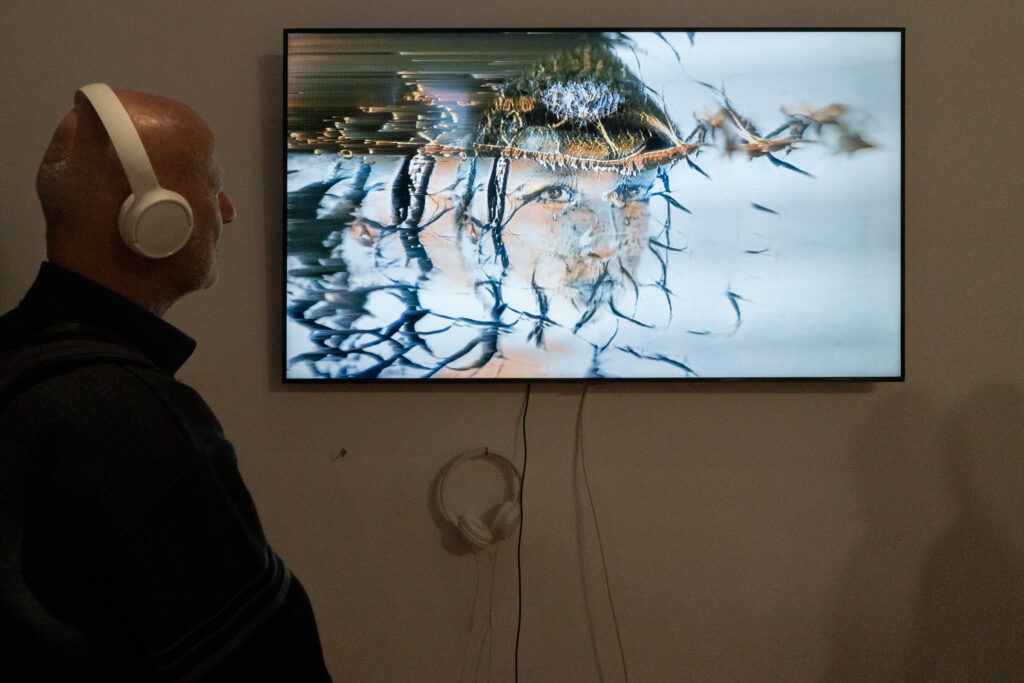
fot. Andrzej Najder
NOSTALGIA FOR HUMANITY 27 October – 18 November 2022
Vernissage with a guided tour: 7 pm
Project website: https://galeriapodbrzezie.up.krakow.pl/
Podbrzezie Gallery – 3 Podbrzezie Street, Kraków (1st floor)
Weekdays 12:00-4:00 p.m. (free admission)
Additional events:
Biota Beings. How much are we willing to change?
artist talk, online of Facebook,
details on: https://ws.up.krakow.pl/2022/10/24/nostalgia-za-czlowiekiem-festiwal-wydzial-sztuki-w-miescie-move-up/
14.11.2022, godz. 15:30
Online meeting with Michael Burton and Michiko Nitta (Burton & Nitta artistic group), devoted to their work in the field of speculative design, in particular their current research on the Biota Beings project.
Artist Talk will be provided in English.
Conducted by: Rafał Kosewski, Monika Weychert
Curator’s Guided tour
18.11, Hours 15:00
Led by: Monika Weychert
Kaitlin Bryson & Saša Spačal, Michael Burton & Michiko Nitta, Dunne & Raby, Natalia Kopytko, Magdalena Lazar & Marcin Pazera, Daniel Lee, Cecylia Malik & Matki Polki na Wyrębie, Krzysztof Marchlak, Memorymorph (Małgorzata Łuczyna & Jacek Złoczowski), Łukasz Murzyn, Andrzej Najder, Bartosz Zaskórski, Jacek Złoczowski
The Anthropocene is an era of human domination over the Earth’s ecosystem, and simultaneously a period that heralds humanity’s demise. Faced with the climate crisis and the sixth mass extinction, do we still have the right to call ourselves a ‘rational’ species? Our economy, still based on the production of fossil fuels and the wasteful exploitation of natural resources, is contributing to the disappearance of biodiversity, the creation of extreme weather conditions, rising water and land temperatures, the acidification of the oceans, and the introduction of countless tonnes of trash that will take hundreds of years to decompose. Although we’re constantly informed about all these phenomena, we’re unable to believe in the looming possibility of our own ultimate doom. In our quest for the illusory idea of progress, we’re unable to restrain ourselves, almost as if we’re deliberately condemning ourselves to annihilation.
Svetlana Boym writes: The twentieth century began with a futuristic utopia and ended with nostalgia. The optimistic belief in the future has become outmoded while nostalgia, for better or for worse, never went out of fashion, remaining uncannily contemporary. Boym identifies two types of nostalgia: restorative and reflective. The first is characterized by feelings of pain after loss, awareness of the irreversibility of the processes that have been set in motion and compulsive recollection of the past, which is perceived as a lost paradise. The second type of nostalgia strives to rebuild, while emphasizing nostos – a return from a long journey during which we re-evaluate our place in the world. Both types of nostalgia are reflected in the works presented at the exhibition. Their creators offer us glimpses of various visions of the climate crisis, suspended between the present and future. On the one hand, we can view landscapes scarred by environmental degradation and post-industrial sprawl; on the other, we experience a hybrid reality in which the organic blends with the mechanical and digital. Anticipating the future post-crisis fate of the human species, we can imagine its retrograde evolution (a return to the oceans), its close connection with the natural world by means of new technologies (creation of so-called ‘life infrastructures’) or eventual extinction while its legacy is left to the mercy of artificial intelligence.
The extraordinary emotional burden that comes with the premonition of irreversible changes to our planet’s ecosystem is aptly expressed by the term solastalgia, invented by Glenn Albrecht. The Australian philosopher created this neologism by combining the Latin word sōlācium, meaning comfort and consolation, with the Greek root -algia, meaning pain or illness. The term is most often used to describe environmental anxiety or a kind of pre-traumatic stress related to the experience of the climate catastrophe. Solastalgia for humanity awakens in us an existential longing for the ideas of community and nurture that need to be the foundation of the new ethics. Cassandran scenarios have not yet come to pass. Will we, then, succeed in returning to the ‘rational’ nature we proudly assigned ourselves in the classification of the species?